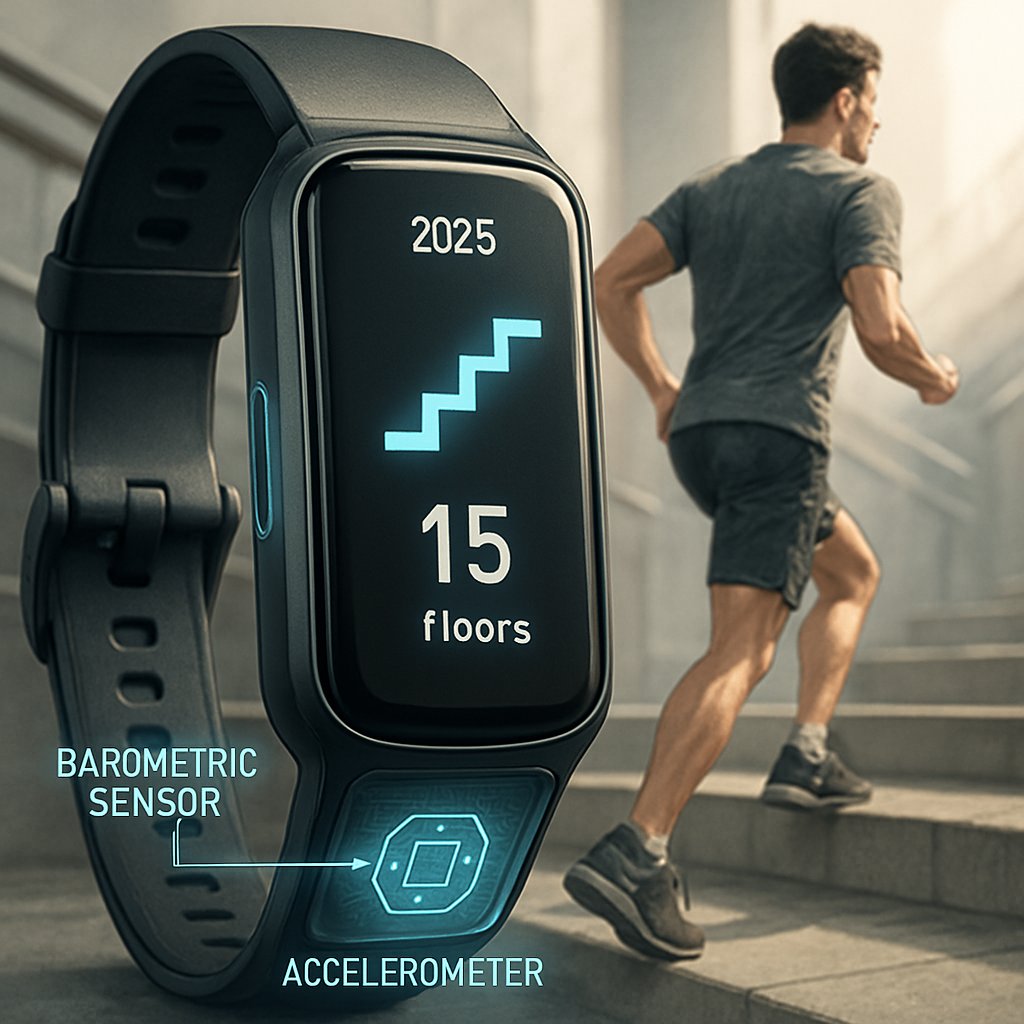Yes, there are several popular fitness trackers that count flights of stairs using built-in sensors. Top models from Apple, Garmin, Fitbit, and others include this feature, helping users monitor their elevation gain and improve daily activity levels. Choosing the right tracker depends on your accuracy needs, fitness goals, and preferred ecosystem.

Understanding which trackers can count stairs is crucial for anyone who wants more than just step counts—such as hikers, gym users, or anyone looking to measure total daily exertion. In this post, you’ll discover which models reliably track flights climbed, how the feature works, current accuracy levels, recent updates, and the best options.
- Most top trackers (Apple, Garmin, Fitbit, Amazfit) support flight/stair tracking.
- They use a barometric altimeter and motion sensors to detect elevation gain.
- You’ll get more accurate data if you use stairs, not elevators.
- Always update your device for the latest algorithm improvements.
- Apple’s official guide, Fitbit support, and Garmin FAQ offer official details.
How Do Fitness Trackers Count Flights Of Stairs?
Fitness trackers that count stairs use a barometric altimeter combined with an accelerometer.
A “flight” is typically defined as a vertical gain of about 10 feet (3 meters)—not just stepping movement, but actual elevation change.
Key steps in stair counting:
- The tracker senses a sudden increase in altitude using the barometric sensor.
- Simultaneously, the accelerometer detects stepping motion.
- Only walking/running up stairs counts; elevators or ramps generally don’t unless you simulate the motion.
- Most trackers require continuous movement—pausing may “reset” the count.
Example: On the Apple Watch Series 10, one flight = ~3 meters of vertical ascent. On Garmin, it’s also ~10 feet, and Fitbit uses the same metric.
Which Fitness Trackers Count Flights Of Stairs?
Here are the most reliable options that track flights climbed:
1. Apple Watch (Series 6 to Series 10 & Ultra models)
- Tracks “Flights Climbed” using both altimeter and motion sensors.
- Requires steady stair climbing for accurate counts.
- Accuracy: Typically 70–90% based on user tests.
- Apple’s Flights Climbed FAQ
2. Garmin Devices (Vivosmart, Forerunner, Fenix, Venu, Vivoactive)
- Uses barometric altimeter; often cited as best-in-class for elevation metrics.
- Popular with hikers and athletes who want accurate altitude tracking.
- Recent reviews rate Fenix 7 and Venu 3 highly for stair tracking.
- Garmin Floor Climb Guide
3. Fitbit (Charge 4–6, Versa 2–4, Sense, Inspire 3)
- Offers “Floors Climbed” with both sensors.
- Community data: ~65–75% accuracy; barometer sometimes sensitive to weather.
- Fitbit Floor Counting Support
4. Amazfit Band 7, GTS Series, GTR 4
- Barometer-based, tracks floors in Health app.
- Accuracy improving with new firmware (2024–2025).
5. Dedicated Pedometers
- Some advanced pedometers, like the Ozeri 4x3sport, offer specific “Stair Mode” for step and elevation tracking.
- Often more reliable if you only want stair metrics.
How Accurate Are Fitness Trackers At Counting Stairs?
Barometric sensors are sensitive:
- Weather changes, air pressure, or sudden wrist movements can impact results.
- Recent academic research (PLOS ONE, 2024) found Garmin Fenix and Apple Watch undercount by 3–30%, while Fitbit and Amazfit are typically within ±2 flights per 20 climbed.
- Elevators, escalators, or pausing on stairs can cause missed counts.
Tips for better accuracy:
- Use handrails minimally, as wrist position matters.
- Keep firmware updated for the latest sensor improvements.
- Compare your device’s count to actual stairwells for calibration.
Why Track Flights Of Stairs? (Benefits & Use Cases)
- More Complete Fitness Data: Stairs = higher-intensity exertion, great for heart health.
- Motivation: Setting goals for daily flights climbed encourages extra movement.
- Useful For: Office workers, apartment dwellers, hikers, and those in cardiac rehab.
Did you know?
Climbing just 10 flights daily is associated with a 20% reduction in all-cause mortality, according to a 2024 review in the Journal of Physical Activity and Health.
Which Tracker Is Best For Counting Flights Of Stairs?
Top recommendations:
- Apple Watch Series 10 (best for iPhone users, ecosystem, app support)
- Garmin Fenix 7/Venu 3 (best accuracy, battery, robust for athletes)
- Fitbit Charge 6 (user-friendly, affordable, strong ecosystem)
- Amazfit GTR 4 (budget-friendly, good sensor set)
Pricing (as of July 2025):
- Apple Watch Series 10: $399+
- Garmin Fenix 7: $599+
- Garmin Venu 3: $349+
- Fitbit Charge 6: $149–179
- Amazfit GTR 4: $179–219
Prices may vary by region. Check Apple, Garmin, Fitbit, and Amazfit official sites for current offers.
Frequently Asked Questions (FAQ)
Does every fitness tracker count stairs?
No, only models with a barometric altimeter and updated software do. Always check product specs.
Do flights of stairs tracked by Fitbit, Garmin, or Apple count elevator rides?
Usually not. The sensor looks for elevation change plus stepping movement.
Can I improve stair counting accuracy?
Yes—update your firmware, use the correct arm, and climb continuously without stopping.
Which is most accurate in 2025?
Garmin Fenix 7, Apple Watch Series 10, and Fitbit Charge 6 consistently score highest in independent accuracy tests.
Where can I get official support?
Conclusion: Should You Get A Fitness Tracker For Stair Counting?
Yes—if tracking flights of stairs is important to you, modern trackers from Garmin, Apple, Fitbit, and Amazfit all support this feature in 2025.
Accuracy has improved with each generation, but real-world use varies.
Compare models, keep your device updated, and check for stair-counting features before buying.
Ready to boost your daily activity? Check the latest deals, compare specs, and invest in a fitness tracker that motivates you—your heart (and step count) will thank you!
